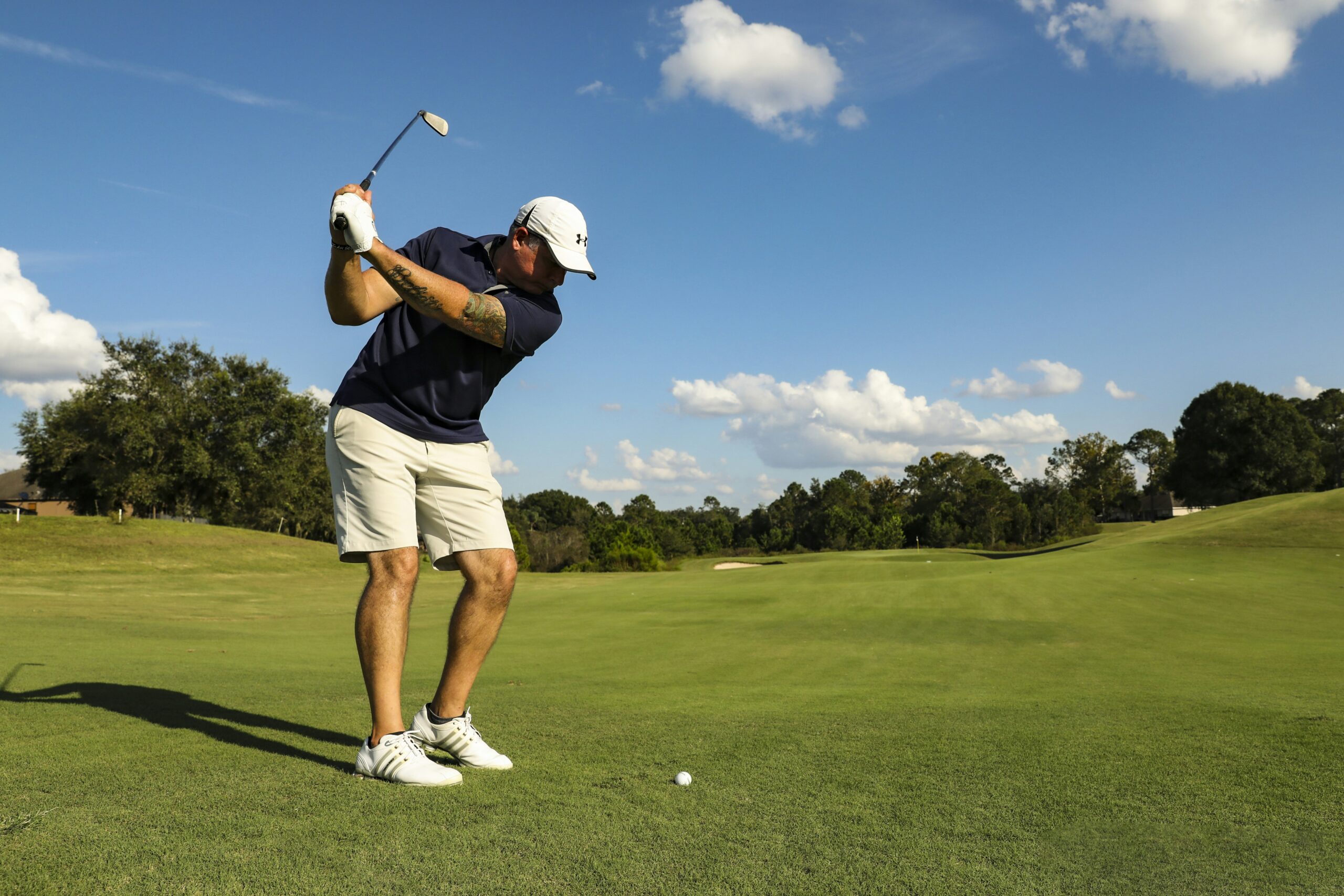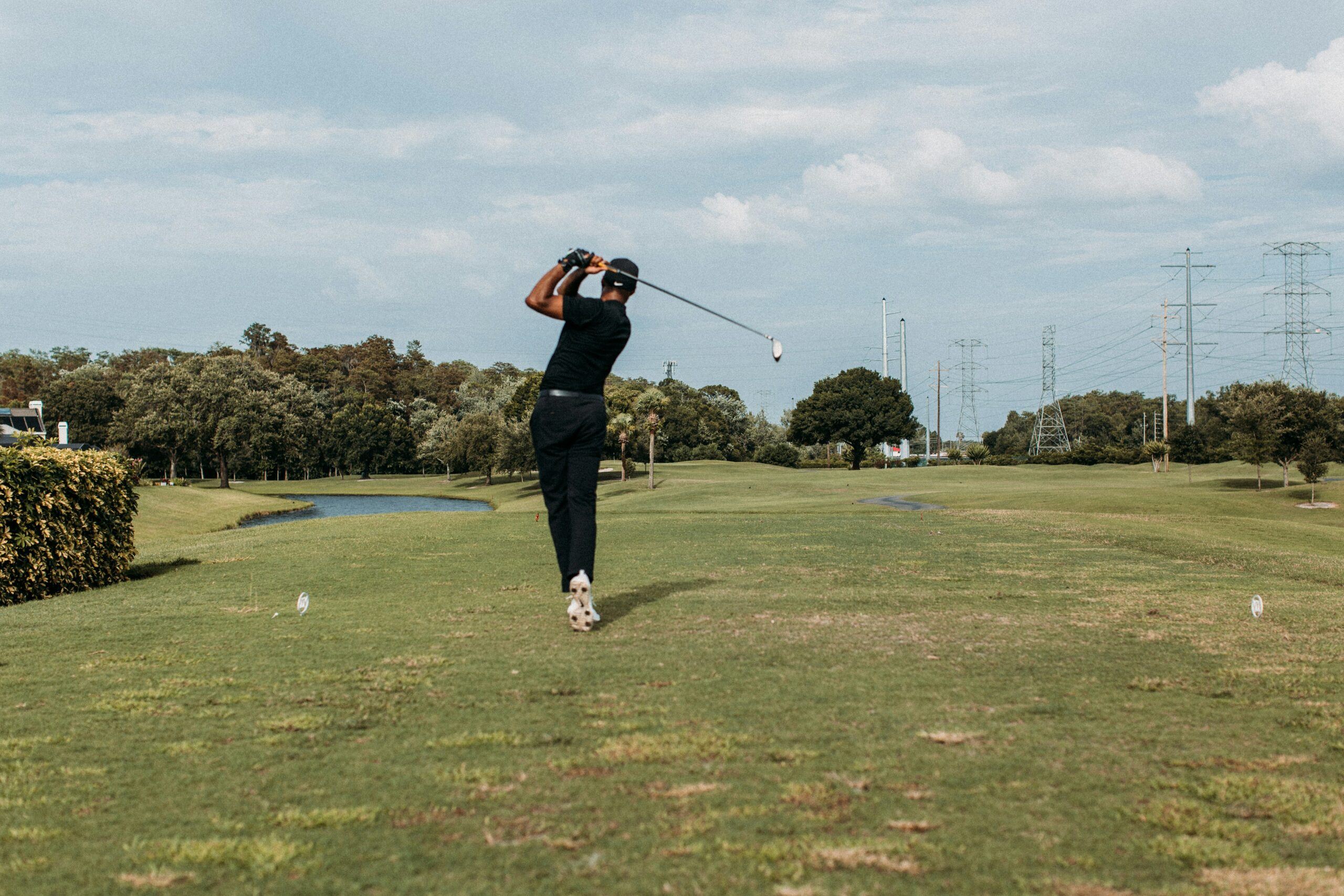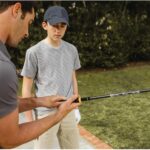Have you ever counted your swings and wondered what the numbers really tell you about your game?

What Is A Golf Swing Counter?
A golf swing counter is a device or tool that records how many swings you take and often captures additional data about those swings. You can use a swing counter to track repetition, measure consistency, and gather metrics that help you improve technique and practice more efficiently.
Basic definition
A swing counter can be as simple as a mechanical clicker you press each time you swing, or as sophisticated as a sensor-based system that measures club speed, tempo, angle, and impact quality. You’ll find that different counters offer different levels of feedback depending on the technology they use.
Why it matters to your game
Tracking swings gives you objective data you can act on instead of relying on memory or feel alone. When you regularly count swings and review the associated metrics, you’ll make smarter practice choices and accelerate improvement by focusing on measurable elements of your swing.
Types of Golf Swing Counters
There are multiple types of counters available, and each one fits a different style of practice and budget. Knowing the differences helps you pick a tool that matches your goals.
Mechanical counters
Mechanical counters are simple clickers or tally devices that you press each time you swing. They are inexpensive, rugged, and require no power, making them easy for repetitive practice sessions.
Electronic counters
Electronic counters offer more features than mechanical ones, often logging swing counts digitally and sometimes connecting to apps for record-keeping. They balance ease of use with added convenience like timestamps and simple analytics.
Wearable sensors
Wearable sensors attach to the glove, wrist, torso, or club and use accelerometers, gyroscopes, and magnetometers to detect swings and measure advanced metrics like tempo, swing path, and clubhead speed. They’re more expensive but deliver richer feedback.
Smartphone apps and video analysis
Apps either pair with sensors or use your phone’s camera to analyze swings. Video analysis apps let you slow down footage, draw lines, and compare swings side-by-side, which helps you visualize changes and measure angles.
Comparison of counter types
| Type | Typical Cost | Accuracy | Best for | Pros | Cons |
|---|---|---|---|---|---|
| Mechanical clicker | Very low | Low (counts only) | Simple repetition practice | Durable, cheap, no batteries | No detailed metrics |
| Basic electronic counter | Low–mid | Moderate | Casual tracking | Digital logs, simple interface | Limited metrics |
| Wearable sensor | Mid–high | High | Technical improvement | Rich metrics, real-time feedback | Requires charging, learning curve |
| Smartphone app/video | Free–mid | Varies | Technique work, visual feedback | Visual, shareable, flexible | Depends on camera quality or sensor pairing |
What Metrics Does a Swing Counter Measure?
Depending on the type, a swing counter can measure basic counts only or provide a range of detailed metrics that give insight into swing mechanics and performance.
Swing count
This is the core function: how many swings you’ve taken. Knowing your swing counts helps you manage practice volume and track how many repetitions you’ve completed for specific drills.
Swing tempo and rhythm
Tempo measures the timing ratio between backswing and downswing. You’ll often see tempo expressed as a ratio like 3:1 or in beats per minute. Improving tempo can help you achieve consistent timing and better ball striking.
Clubhead speed
Clubhead speed is commonly measured in miles per hour (mph) or kilometers per hour (km/h) and is a direct indicator of potential distance. If you’re trying to increase distance, tracking clubhead speed is important.
Ball speed and smash factor
When linked to impact sensors or launch monitors, counters can report ball speed and smash factor (the efficiency of energy transfer from club to ball). This tells you how well you’re compressing the ball.
Swing path and face angle
These metrics tell you whether the club is traveling inside-out, outside-in, or square at impact, and whether the clubface is open or closed. Small changes here often eliminate slices or hooks.
Angle of attack and dynamic loft
Angle of attack indicates whether you’re hitting up, down, or level at the ball. Dynamic loft is the effective loft at impact. These influence launch conditions and trajectory.
Impact quality and strike location
Sensors or impact mats can reveal where on the clubface you’re striking the ball. Center contact usually produces better distance and direction control.
Tempo examples and what they tell you
| Metric | What it reveals | How you might respond |
|---|---|---|
| 3:1 tempo | Smooth timing (backswing to downswing) | Maintain rhythm, avoid rushing downswing |
| Fast tempo (high bpm) | May cause loss of control | Work on controlled acceleration drills |
| Inconsistent tempo | Poor repeatability | Use metronome or count-based drills |
How a Swing Counter Works
Understanding the underlying technology helps you choose the right tool and get the most accurate data.
Sensors and electronics
Wearable and club-mounted counters typically use accelerometers and gyroscopes to detect motion and orientation. These sensors measure linear acceleration and angular velocity, respectively. Magnetometers and barometers sometimes provide additional context for orientation and altitude.
Algorithms and event detection
Raw sensor data is processed by algorithms that identify key events in the swing: start of backswing, transition, impact, and follow-through. Machine learning models or rule-based logic can improve detection accuracy and filter out non-swing movements.
Optical and radar systems
More advanced systems like launch monitors use Doppler radar or high-speed cameras to track the club and ball through space, directly measuring speed, launch angle, and spin. These are typically used by coaches and fitters due to their high precision.
Data transmission and storage
Most modern counters transmit data to smartphones or tablets via Bluetooth or ANT+. Apps store sessions and provide charts, histograms, and session summaries you can review later.

Setting Up Your Swing Counter
Proper setup is essential for accurate data and a productive session.
Mounting and placement
Follow the manufacturer’s instructions for mounting. Club-mounted sensors must align with the grip and shaft, while wearables need consistent placement on the glove, wrist, or body. You’ll get more reliable data when the device sits where the developers expect it.
Calibration
Many electronic counters require a quick calibration before your first use. Calibration might mean setting a neutral position, swinging a few practice shots, or letting the device learn your motion. Skipping calibration can produce noisy or inaccurate metrics.
Connection with apps and firmware
Pair your counter to the app via Bluetooth and check for firmware updates that often improve accuracy. Make sure your phone’s Bluetooth is enabled and that you grant the app the necessary permissions for sensors, storage, and location if required.
Test swings and confirmation
Take several test swings and compare the recorded data to your feel. If the counter misses swings or records false positives, reposition it and test again. Reliable setup saves time and frustration during longer practice sessions.
Using a Swing Counter in Practice
A counter is most useful when integrated into a structured practice routine. Random swings provide little benefit; targeted reps lead to improvement.
Setting goals and targets
Decide what you want to achieve before starting. You might aim for a specific number of high-quality strikes, a target tempo, or a consistent clubhead speed. Setting measurable targets keeps your practice focused and efficient.
Warm-up and activation
Begin with a dynamic warm-up and some half swings to activate the muscles. Use the counter to log these warm-up reps so you can distinguish them from focused practice swings.
Quality over quantity
Counting swings is not an excuse to mindlessly hit balls. Assign quality criteria—such as center contact or consistent tempo—and only count swings that meet those standards toward your target. This enhances deliberate practice.
Structured session example
| Segment | Duration | Purpose | Target |
|---|---|---|---|
| Warm-up | 10 minutes | Loosen up and groove basic motion | 20 easy swings (not counted toward main set) |
| Tempo drills | 15 minutes | Improve rhythm and timing | 50 swings at 3:1 tempo |
| Impact drills | 20 minutes | Focus on center contact | 40 counted swings with feedback |
| Game-simulation | 20 minutes | Integrate into course-like scenarios | 30 swings under simulated pressure |
Real-time feedback and corrections
Use live metrics to correct a flaw immediately rather than waiting until the end of your session. If clubhead speed drops mid-session, you can take a break or adjust technique before bad habits solidify.

Interpreting Data and Making Adjustments
Numbers only help when you understand what they mean and how to act on them.
Looking for trends rather than single swings
Single swings can be noisy due to variability. Focus on averages and trends across a session or several sessions to make meaningful adjustments. Small consistent changes are more valuable than dramatic one-shot results.
Benchmarks and expectations
Expect different benchmarks based on your level and goals. For example, recreational players may prioritize accuracy and consistency over maximum clubhead speed, while players seeking more distance will emphasize speed metrics.
From data to drills
If your tempo is inconsistent, use metronome-based drills. If strike location is off-center, practice impact-focused drills with tees or impact tape. Let the metrics guide targeted practice rather than vague intentions.
Sample interpretation table
| Issue shown by metrics | Likely technical cause | Suggested drill |
|---|---|---|
| Low smash factor | Poor contact or inefficient energy transfer | Half swings focusing on compressing the ball |
| Outside-to-in path | Over-the-top move | Drill: swing trace drill with alignment sticks |
| Short backswing / low tempo | Restricted shoulder turn or tension | Drill: slow-motion full-turn swings |
Common Mistakes and How to Avoid Them
Even with great tools, mistakes happen. Knowing common pitfalls will keep your practice productive.
Counting every swing without quality control
If you count every random swing, you’ll inflate totals without improving performance. Only count deliberate, quality swings that meet your practice criteria.
Poor device placement
Improper placement leads to missed swings or false data. Re-check mount points and wearables at the start of each session.
Ignoring calibration and updates
Bad data often comes from outdated firmware or skipped calibrations. Regularly check for updates and recalibrate when you change clubs or grips.
Over-reliance on numbers
Data is a tool, not the end goal. Don’t become obsessed with chasing single metrics; use them in service of better technique, course management, and scoring.
Using a counter for every single shot on the course
You can use counters during on-course practice, but course play requires focus on strategy and shot execution, not repetitive metrics. Use counters for practice sessions rather than full rounds.
Choosing the Right Swing Counter for You
Choosing comes down to your budget, goals, and preferred way of practicing.
Consider your objective
If you want simple repetition tracking, a mechanical or basic electronic counter fits. If you need to improve swing mechanics, choose a wearable or sensor-based system. If you prefer visual feedback, select a video app or launch monitor.
Budget considerations
Set a budget and weigh the cost against the features you truly need. High-end launch monitors deliver more precise data but often at a much higher price than wearable sensors or apps.
Compatibility and ecosystem
Ensure the counter integrates with your phone, preferred app, or coaching platform. If you work with a coach, choose a device whose data can be easily shared.
Ease of use and learning curve
Devices with more features can require time to learn. If you want simple and fast, pick a counter with straightforward setup and clear metrics.
Comparison checklist
| Factor | What to consider |
|---|---|
| Accuracy needs | Are you measuring distance, tempo, or both? |
| Budget | How much are you willing to spend? |
| Portability | Will you use it on the range, course, or both? |
| Battery life | How long do you practice per session? |
| App features | Do you need tracking, charts, or coaching integration? |
Cost and Value
Understanding price ranges helps you make a better decision about what’s worth purchasing.
Price ranges
- Mechanical clicker: very low cost, usually under $20.
- Basic electronic counters: typically $20–$100 depending on features.
- Wearable sensors and smart grips: commonly $100–$400.
- Launch monitors and high-end radar systems: $1,000 to $20,000 depending on capability.
Value versus cost
Consider how often you’ll use the counter and what features will produce measurable improvement. A mid-range wearable often provides the best balance of cost and actionable metrics for most players.
Return on investment
If the counter helps you practice more effectively, reduce wasted range time, or add yardage to your drives, it quickly pays for itself. Think of the counter as an investment in focused practice rather than an accessory.
Maintenance and Care
Taking a few simple steps keeps your counter functioning and accurate.
Battery care
Charge regularly and avoid complete depletion when possible. For coin-cell or replaceable batteries, keep spares if you plan long practice sessions.
Cleaning and storage
Wipe sensors and mounts clean after use, especially if you practice outdoors. Store electronics in a cool, dry place when not in use.
Firmware and software updates
Check for firmware updates and app updates frequently. Updates often improve sensor algorithms and fix bugs.
Physical protection
If you use a club-mounted sensor, consider a protective sleeve or case to reduce impact damage and wear from repeated contact.
Integrating a Swing Counter with Coaching
A counter becomes much more valuable when paired with coaching feedback and structured plans.
Sharing data with a coach
Most modern counters allow you to export sessions or share app accounts. Sharing consistent data helps your coach track progress and prescribe targeted drills.
Using counters in lessons
During lessons, counters provide objective feedback that supports verbal instruction. You can combine video with sensor metrics to get a fuller picture of what’s happening.
Creating a long-term plan
Use the counter to build a plan with milestones—tempo, strike quality, and speed improvements—so you and your coach can measure progress over weeks and months.
Troubleshooting Common Issues
If your counter isn’t behaving as expected, these steps usually solve the problem.
Missed swings
Check placement and ask whether the device needs recalibration. Ensure the sensor isn’t loose and that the app’s motion sensitivity settings are appropriate.
False positives
If the counter registers non-swing movements, adjust the detection sensitivity or change where you mount the device. Some apps let you set thresholds for swing detection.
Connection problems
Restart your phone and the device, toggle Bluetooth, and ensure no other devices are interfering. Update firmware and app if issues persist.
Inconsistent metrics
Confirm that you’re using a consistent grip, posture, and mounting position. Inconsistent inputs produce inconsistent outputs, so standardize your setup.
Frequently Asked Questions
Here are answers to common questions you may have when choosing or using a swing counter.
Do I need a swing counter to get better?
No, you don’t need one to improve, but a well-used counter can speed up your learning by providing objective feedback and helping you focus practice sessions.
Can a cheap counter be useful?
Yes—especially for counting reps and reinforcing simple habits. Cheap counters can still cultivate discipline and structure in your practice.
How often should I use a swing counter?
Use it during practice sessions where you want measurable improvement. You don’t need it every time you play a casual round, but regular practice sessions with a counter are beneficial.
Are swing counters accurate enough for club fitting?
Basic counters usually aren’t sufficient for precision club fitting. For fitting, use a launch monitor or professional system designed for high accuracy.
Will a counter change my swing?
A counter won’t change your swing by itself; it provides feedback. You still need focused practice, proper drills, and possibly coaching guidance to turn data into improved mechanics.
Final Thoughts
A golf swing counter is a practical tool that helps you quantify practice, maintain discipline, and make measurable improvements. Whether you use a simple clicker, an app, or a sophisticated wearable, the key is consistent, deliberate practice with clear goals.
You’ll find the most benefit when you pair the counter with structured routines, smart drills, and periodic reviews of trends rather than chasing single numbers. With regular use, the counter becomes a partner in your practice, guiding you toward steadier tempo, better impact, and more reliable performance on the course.








